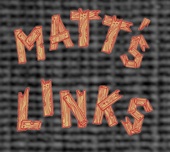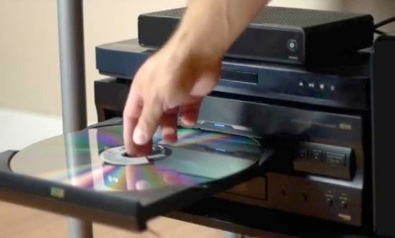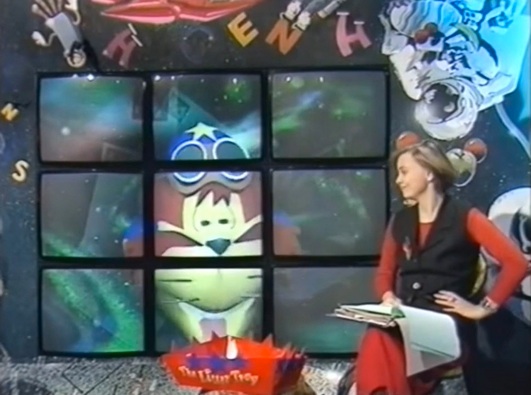BBC Childrens TV


FORMATION
AA
BROOM CUPBOARD

Lots of material needs adding here..

BBC’s First Virtual Actor
However one significant innovation that I was involved with the installation and maintenance of Children’s BBC’s first ‘Vactor’ a cat called “Ratz”.

The title says CBBC but that didn’t exist then -it was “Children’s BBC”)
Phillips 12” Laser Disc
Player.
Unfortunately the operation the area did not have any form of Chromakeying ability so the only way that it and the presenter, here a young Phillippa Forester, could appear in shot together would’ve been by back projection.
Unfortunately again that would’ve required a substantial distance behind the presenter for the image from a video projector to spread out -yet the area was tiny and so nine Melford monitors were stacked behind. By the way my experience of trying this on other shows it that you always get a central ‘hot spot’ where the camera is directly in line with the video projector - besides the resolution was poor in those days and colorimetry not very stable. Not only did these monitors throw out a huge amount of heat, and remember all studio lighting in those days was by incandescent bulbs here three or four at 1kW each, but their colorimetry had to be permanently significantly shifted by the Engineers to be viewable ‘in-shot’.
The set up was in the corner of Pres A in the mornings working to Con3 and in the afternoons to Pres A Control.
How Ratz Worked
My understanding is that an outside company based in East Anglia was contracted to program a small computer (I think it was a BBC Model B). The only code that would run remotely fast enough on it was assembler which ran at a whopping 1MHz clock rate (those were the days). It initialised a Laser Disc Player (see below right) and about 70 stills were made ready to be read off instantly. Each had an identical background but a different head position.
The computer interpreted the cat operator’s controls which led everyone to assume that they positioned the head and its orientation on the screen. It could also increase in size by 2:1 and zoom off left or right. The presenter’s microphone fed a very coarse A to D converter and that was used to select the opening of the mouth and position of the whiskers etc. In reality (excuse they pun) every position was simply a still and relaxing the controls went back to a master still -the stationary position. Theoretically a dreadful way of doing it but it was slick enough to look like it worked.
Click the image to see the cringeworthy video from November 1993..
There’s a collection of Children’s BBC continuity clips here: YT: ConCam

Disclaimer
Whilst some care has been taken to check externally linked websites no responsibility is offered nor implied for the suitability, legality or reliability of content therein.


